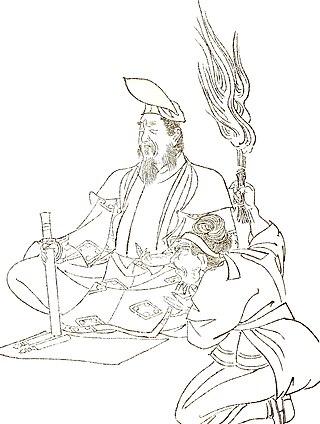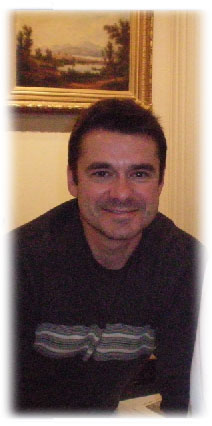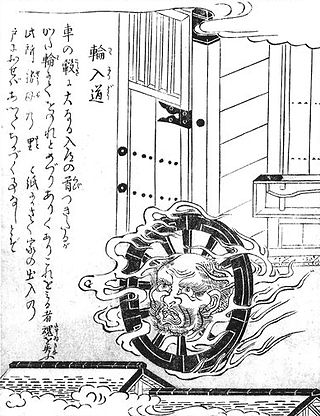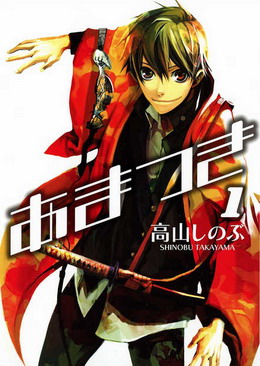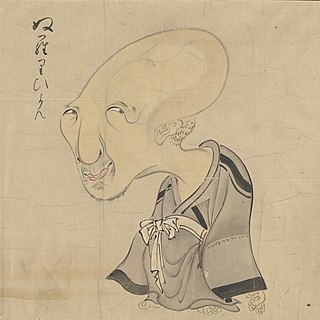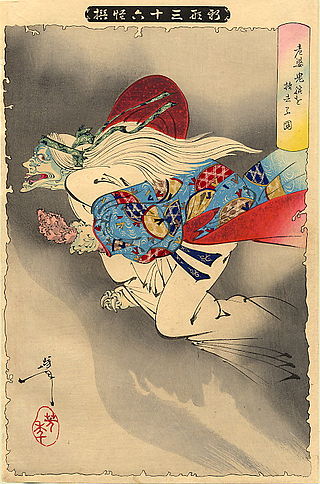Oneshot-Exclusive Characters
Characters who only appeared in the original Nurarihyon no Mago oneshot. Several were later incorporated into the main story or served as inspiration for characters that appear later on. The story surrounding Jami greatly resembles the premise of this oneshot.
- Yura Usami (宇佐美 ゆら, Usami Yura)
- Kana's predecessor. She is Rikuo's childhood friend and neighbor who openly speaks her mind and hates supernatural things like spirits, mediums, etc. She serves as the class representative.
- Daikaku Bandain (槃蛇院 大覚, Bandain Daikaku)
- A supposed high-class monk skilled in exorcism who runs a very popular television show. He convinces people that their houses are haunted in order to gain control of the land and hand it over to the Shuei Construction Group. When Usami tries to prevent her grandfather's store from meeting the same fate, Daikaku kidnaps her. Later he nearly rapes her under the pretense of an exorcism, but is stopped by "Night" Rikuo. As a result, Daikan's temple is set ablaze and he is found the following morning with a significant number of injuries.
Terminology
This section describes a work or element of fiction in a primarily in-universe style.(January 2013) |
This article may contain an excessive amount of intricate detail that may interest only a particular audience.(January 2013) |
- Sakazuki (盃, Sakazuki) is a pledge of loyalty made over an exchange of wine or sake. A 50-50 portion division gives equal footing to both parties, and is considered a sakazuki of sworn brothers. A 70-30 portion division is a pledge of fealty between a boss and his subordinates. [10]
- Ikigimo (生き肝, Ikigimo) is when a person's liver is taken out while they are still alive. Many yōkai in Nurarihyon's time believed ingesting the life force (i.e. liver) of infants, priests/priestesses and noble persons would increase their strength.
- Osore (畏, Osore) is the unique skills and traits of each yōkai. It refers to the "Fear" of the unknown, an emotional reaction produced when the yōkai represent themselves as "monsters". It is especially important for leaders who wish to draw together gangs of yōkai. There are different types of "Fear" depending on the type of yōkai, such as water or ice. It also plays an important role in battles between yōkai, in which they must "scare one another".
- Hatsu (鬼發, Hatsu) is the first stage of activating "Fear", and is simply an attempt to scare an opponent by exerting a frightening aura. Those affected by "Manifestation" will experience an overwhelming sense of intimidation, and depending on their opponent's skills, may hallucinate. This aura produces a palpable wall of pressure in the atmosphere, and cutting through this tension to reach the enemy is an important part of yōkai combat.
- Hyoui (鬼憑, Hyoui) is the second stage of activating "Fear" used in yōkai battles. It is the process by which a yōkai materializes their "Fear" into an attack that can harm their enemy by severing their "Manifestation". Yōkai can produce a variety of attacks and techniques based on their type of "Fear".
- Matoi (鬼纏, Matoi) is a special technique allowing the leader of the Hyakki Yakō to strengthen their "Fear". This technique was created by the Second Head of the Nura Clan, Rihan Nura, and will only work for a leader who is part human. The explanation for this requirement is that the leader must have a "human heart" to be able to empathize or "understand" his subordinates, in order to invoke Matoi. The technique works by "layering" or "covering" the leader in his subordinate's fear, which augments and strengthens his own power. The leader literally "wears" his subordinate, which also gives him access to his subordinate's unique abilities (when Rikuo used Matoi with Tsurara, his attacks gained the ability to freeze his targets). When Matoi is invoked with a subordinate for the first time, a tattoo-like marking appears on the leader's body, symbolizing the pact they have made.
